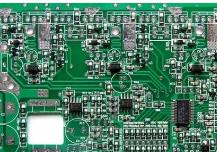How many layers is the best?
The designer weighs how many layers to choose for the design according to the complexity of the entire circuit designed, mainly based on the difficulty of the core devices in the entire project and the difficulty of the device layout.
How many layers should a conventional PCB have?
1. Single panel
Single-sided PCBs are mainly used in very simple consumer electronic products. After all, the process is simple, and now the original circuit board materials are cheap (FR-1 or FR-2) and thin copper cladding. Single-sided board designs usually contain many jumpers to simulate circuit routing on double-sided boards. Generally used in low frequency circuits. Because this type of design is very susceptible to radiation noise. So designing this type of circuit board will be more troublesome. If you don't pay attention to it, many problems will occur. Although there are successful cases in complex designs, they are all possible only after careful consideration and continuous verification. Take an example, such as a TV set, which puts all the analog circuits on a single panel at the bottom of the chassis, and uses a metalized CRT to shield the circuit board on a separate digital tuning board near the top of the battery pack. If you need high-volume, low-cost production of PCBs, you need to do it yourself.

Two, double panel
It is equivalent to a single panel, the more complicated is the double panel. Some double-sided panels still use FR-2 materials, but FR-4 materials are more commonly used. The increase in FR-4 material strength better supports the vias. Because there are two layers of foil, double-sided boards are easier to route, and signals can be planned by crossing wires on different layers. However, cross-wiring is not recommended for analog circuits. When possible, the bottom layer should be kept as intact as a ground plane, and all other signals should be routed on the top layer. There are several advantages of making ground plane at the bottom:
Grounding is usually the most common connection in a circuit. You can connect all the GND networks of the entire board on the bottom layer.
Increase the mechanical strength of the circuit board.
Reduce the impedance of all ground connections in the circuit, thereby reducing signal conduction noise.
Added distributed capacitance to each network in the circuit-helps suppress radiated noise.
Can shield the radiation noise from below the circuit board.
Three, multilayer board
Despite its advantages, double-sided panels are not the best construction method, especially for sensitive or high-speed circuit designs. Therefore, for high-speed design, we usually use multi-layer boards for design. The most common board thickness is 1.6 mm, the material is FR-4, and there will be independent GND or POWER layers and so on. There are many PCB design matters that need to be paid attention to in the multilayer board itself. Below we have to clarify some obvious reasons for using the multilayer board design:
Have independent power and ground connection wiring layers. If the power supply is also on the same plane, other same power supply networks can be connected together by adding vias.
Other layers can be used for signal routing, which can provide more routing space for routing.
There will be distributed capacitance between the power supply and the ground plane, thereby reducing high-frequency noise.
However, other reasons for multi-layer boards may not be obvious or intuitive, mainly as follows:
Better EMI/RFI suppression. Because of the image plane effect, it has been known since the Marconi era. When a conductor is placed close to a parallel conductive surface, most of the high-frequency current will return directly under the conductor and flow in the opposite direction. The mirror image of the conductor in the plane forms a transmission line. Since the currents in the transmission line are equal and opposite, it is relatively unaffected by radiated noise. It couples the signal very efficiently. The image plane effect is as effective as the ground and power plane, but they must be continuous. Any gaps or discontinuities will cause the beneficial effects to disappear quickly.
Reduce the overall project cost of small batch production. Although the manufacturing cost of multilayer boards is relatively high, the EMI/RFI requirements of FCC or other agencies may require expensive testing of the design. If there is a problem, it may need to be pushed down to re-design the PCB for additional testing. Compared with 2-layer PCB, the EMI/RFI performance of multilayer PCB can be improved by 20 dB. If the output is small, it makes sense to design a better PCB first. Effectively prevent crosstalk between various signal layers.
The production process requirements are relatively high. Compared with the 2-layer board PCB design, it is not so difficult.